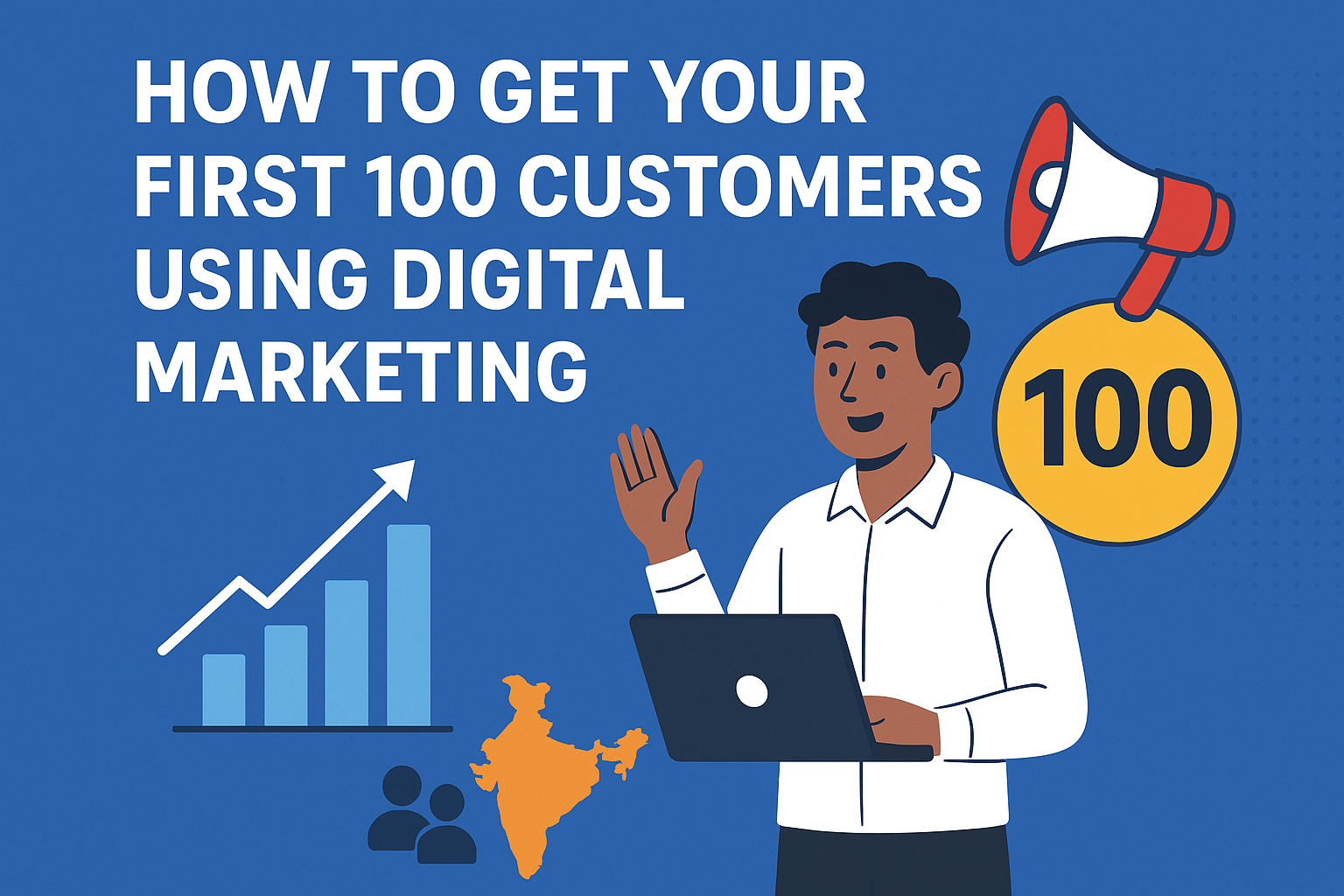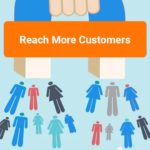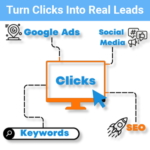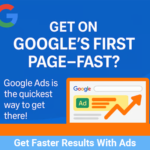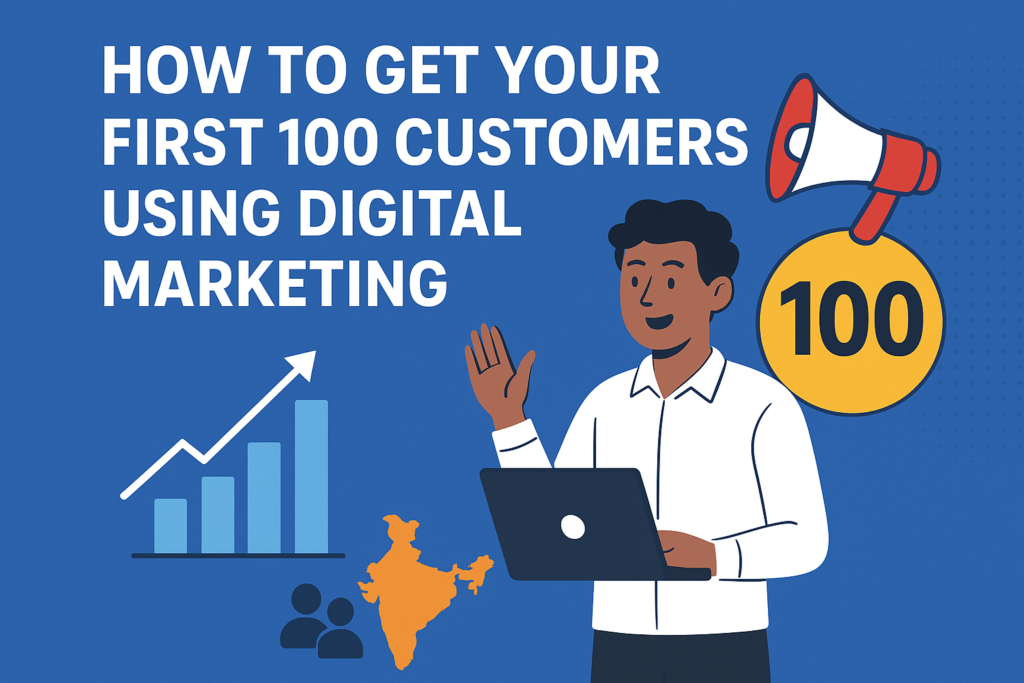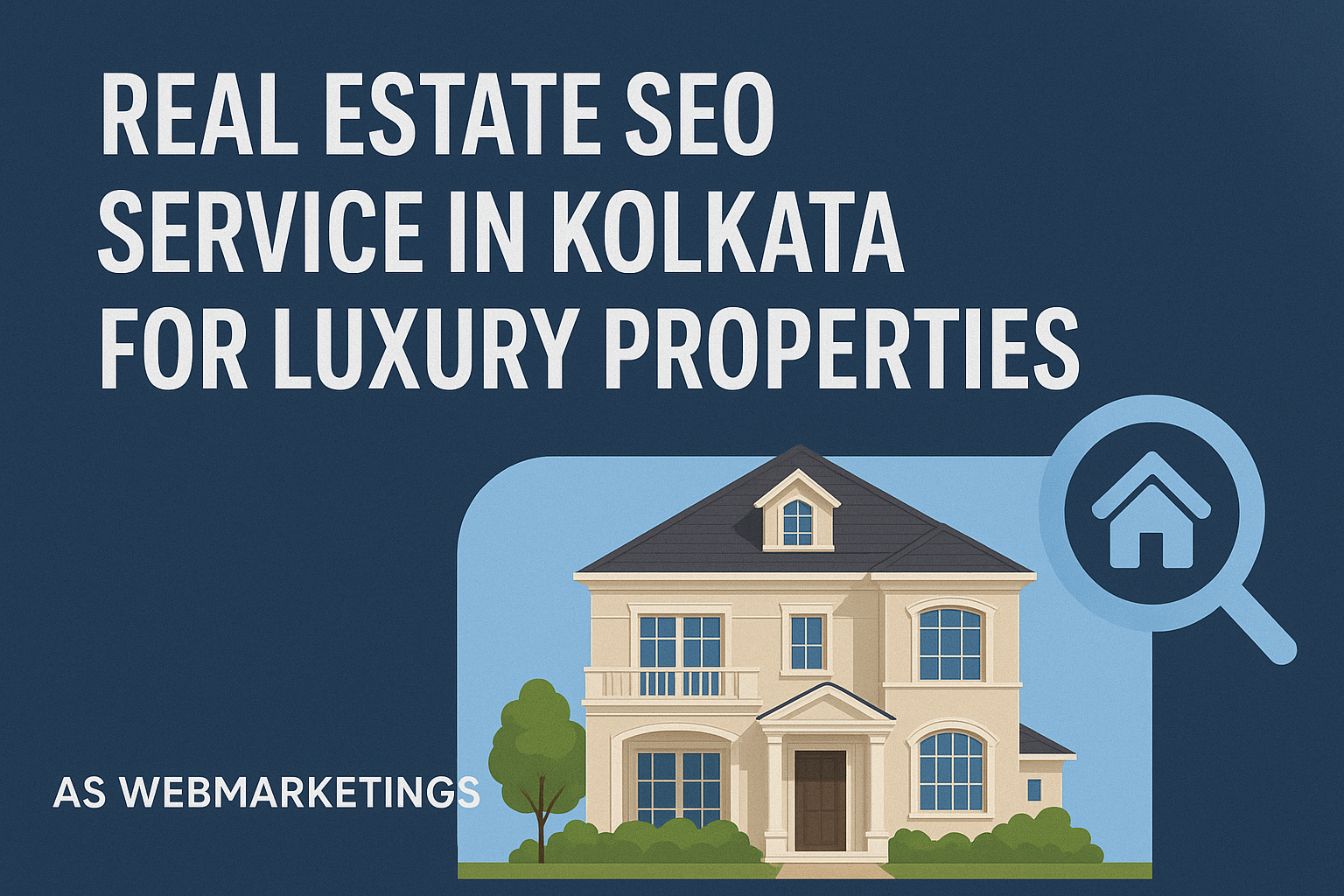Why Digital Marketing is Key for SMEs in India
The advent of digital marketing has greatly altered the customer reaching process of businesses. The use of digital marketing services for instance; local SEO, social media marketing, Google Ads, email marketing, and content marketing can open up new opportunities for small and medium enterprises in India to reach a bigger audience without a high cost.
But acquiring the first set of customers is still one of the major problems SMEs faces. A business that lacks a good reputation or brand presence might find it hard to pull the very first hundred customers. However, that’s not the case if they are applying a digital marketing plan that is well structured and step by step. Local businesses can also get quickly recognized.
Why the First 100 Customers Matter
For any small or medium business in India, acquiring the first 100 customers is a critical milestone in the journey of growth. These early adopters are not just paying clients—they serve as the foundation for your customer acquisition strategy and validate your business model.
Validation: The first 100 customers prove that your product or service effectively solves a real problem for your target audience. They demonstrate that your digital marketing services, local SEO efforts, and online advertising campaigns are resonating with the right people. This validation is crucial before scaling marketing spend or launching larger campaigns.
Feedback: First customers give a lot of information to which you can adjust your product and service to the liking of your customers. Feedback can be used to improve the product, service quality, website usability, and the whole social media, email marketing, and content marketing strategies. By engaging these customers, you are making sure that your marketing activities are in sync with real-world demands, therefore increasing conversion rates and ROI.
Word-of-Mouth Growth: Happy first customers will very likely turn into the company’s voice and will, thus, network about your business in an unofficial way. The traffic of this referral is going to blend with the flow of paid promotions and, thus, will magnify the impact of your digital marketing funnel.
Credibility: A pool of 100 customers will create trust and establish social proof for the next clients. The online presence will be greatly enhanced, local SEO ranking will be improved, and a solid reputation will be built through the display of testimonials, reviews, and case studies.
Getting the first 100 customers opens up an efficient scaling road for your business, which also means you can get advanced marketing automation, lead generation, and customer retention strategies implemented more easily in the future.
Challenges in Acquiring Early Adopters
Getting your first 100 customers isn’t easy, and there are several challenges that SMEs must overcome:
- Limited Brand Awareness: Without an established reputation, potential customers may not know about your products or services.
- Scepticism from Early Adopters: Customers often hesitate to try new brands or services, particularly if competitors are already established.
- Audience Targeting: Reaching the right demographic efficiently is tricky without data-driven strategies and digital marketing analytics.
- Budget Constraints: Most SMEs operate on a tight budget, making it essential to prioritize high-impact channels.
By acknowledging these challenges, businesses can design a structured digital marketing plan to reduce risks, maximize ROI, and systematically attract early customers.
90-Day Step-by-Step Plan to Get Your First 100 Customers
A structured approach combining local SEO, Google Ads, social media marketing, and email marketing can help your business gain early traction. Here’s a week-by-week strategy:
Weeks 1–2: Foundation Setup
- Optimize Your Website:
- Design landing pages with strong call-to-actions (CTAs) like “Book Free Consultation” or “Sign Up Today.”
- Ensure fast loading speed and mobile responsiveness.
- Add lead capture forms for newsletter sign-ups or consultation requests.
- Set Up Local SEO:
- Claim and optimize your Google Business Profile.
- Include business address, phone number, operating hours, and high-quality images.
- Encourage early visitors to leave reviews for credibility.
- Define Your Ideal Customer:
- Identify demographics, interests, and pain points.
- Helps in running targeted campaigns and increasing ROI.
Weeks 3–4: Awareness & Outreach
- Social Media Marketing:
- Share engaging posts, videos, and tips to build brand awareness.
- Target local communities on platforms like Facebook, Instagram, and LinkedIn.
- Email Marketing:
- Send personalized messages to friends, colleagues, and early subscribers.
- Include your value proposition, offers, and updates.
- Community Engagement:
- Participate in local online groups, forums, and associations.
- Offer advice or free content to establish credibility.
Weeks 5–8: Lead Generation
- Google Ads & Paid Campaigns:
- Run small-budget campaigns targeting local customers.
- Use retargeting ads to re-engage visitors who showed interest but didn’t convert.
- Content Marketing:
- Publish blogs and videos addressing customer pain points.
- Include CTAs to capture leads.
- Referral Programs:
- Offer early customers incentives for referring friends or family.
- Encourages organic growth while reducing customer acquisition cost.
Weeks 9–12: Conversion & Retention
- Offer Promotions:
- Launch limited-time offers, special discounts, or bundled packages.
- Collect Feedback:
- Conduct surveys or follow-ups to understand customer needs.
- Use insights to improve offerings and marketing messages.
- Leverage Testimonials:
- Share reviews and case studies on your website and social media.
- Builds trust and strengthens your local SEO.
Sample Budget Allocation & KPIs
| Channel | Budget | Key KPI | Goal |
|---|---|---|---|
| Google Ads | ₹5,000–₹10,000 | CTR, Conversions | Acquire first 20 customers |
| Social Media Ads | ₹3,000–₹5,000 | Engagement, Leads | Reach 50 local prospects |
| Email Marketing | ₹1,000 | Open Rate, Clicks | Convert 10–15 leads |
| Content Marketing | ₹2,000 | Traffic, Leads | Build awareness, drive 15 leads |
| Total | ₹11,000–₹18,000 | Acquire 100 customers |
Tracking KPIs such as click-through rate (CTR), conversion rate, and cost per acquisition (CPA) ensures you maximize your ROI and optimize campaigns along the way.
Real Example & Templates
Example: A local fitness studio in Kolkata gained its first 100 customers by:
- Optimizing their website landing page for sign-ups.
- Running Google Ads targeting nearby neighbourhoods.
- Sharing success stories on Instagram & Facebook.
- Offering a referral discount for existing customers.
Email Template:
Subject: Join Our Exclusive Fitness Community – Limited Spots!
Hi [Name],
We’re excited to welcome you to [Your Business Name]. Get started with a free consultation this week! Spots are limited, so book now.
[Book Your Slot]
Ad Copy Example:
“Get Fit at Home! Join our 12-Week Fitness Program in Kolkata – Limited Seats Available. Sign Up Today!”
Want your project on Google’s first page? Let’s talk today.
Call or WhatsApp us today — your answers won’t wait.
Key Takeaways
Acquiring your first 100 customers is achievable with a structured digital marketing plan. By combining local SEO, Google Ads, social media marketing, content marketing, email campaigns, and referral strategies, Indian SMEs can attract early adopters efficiently.
Tracking performance, optimizing campaigns, and providing value consistently are key to scaling your business. Start today, and let your first 100 customers pave the way for long-term success.

